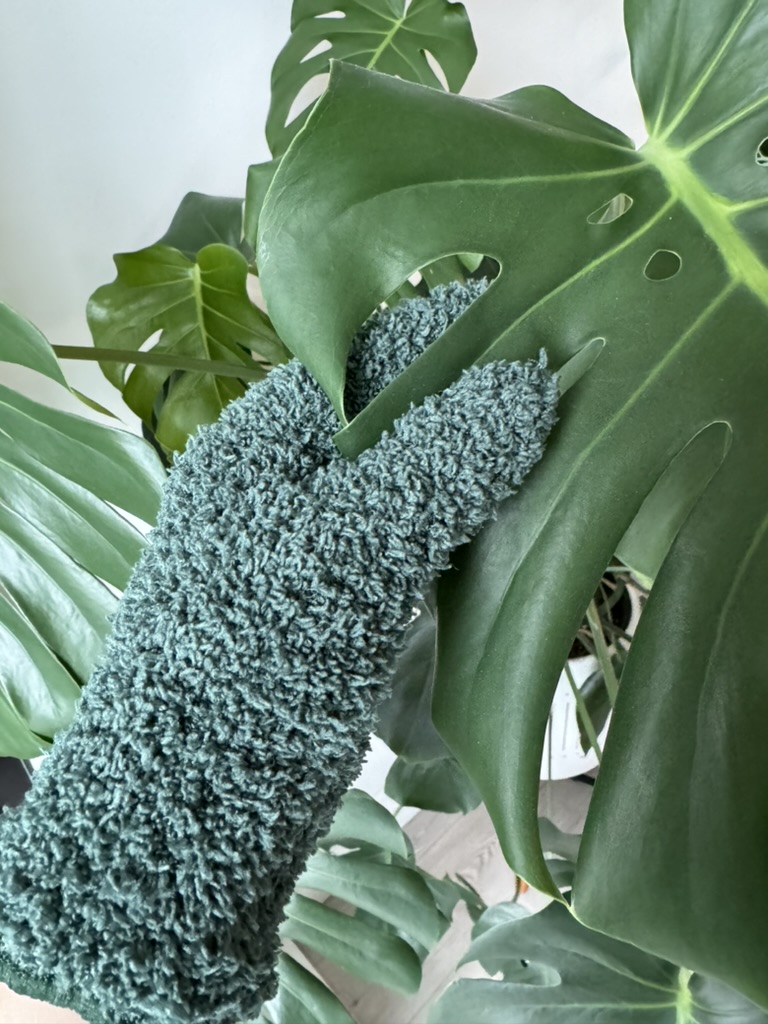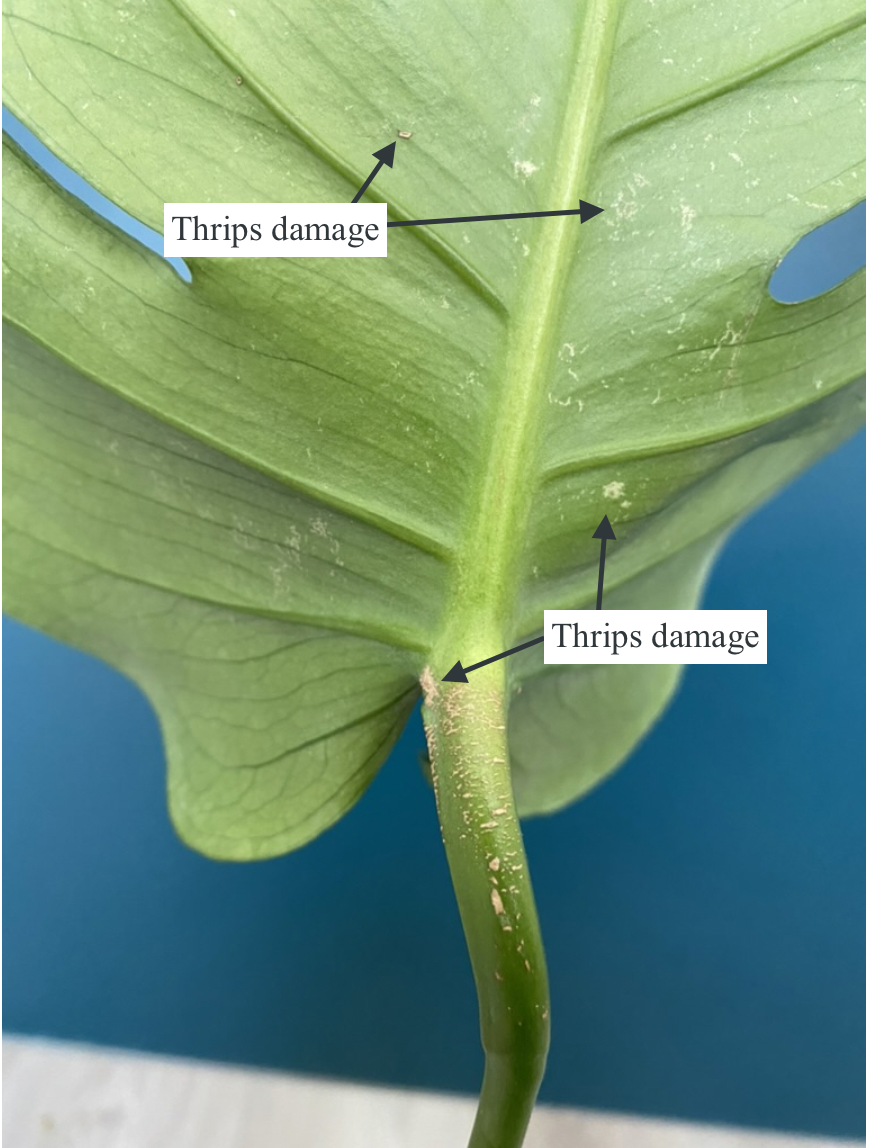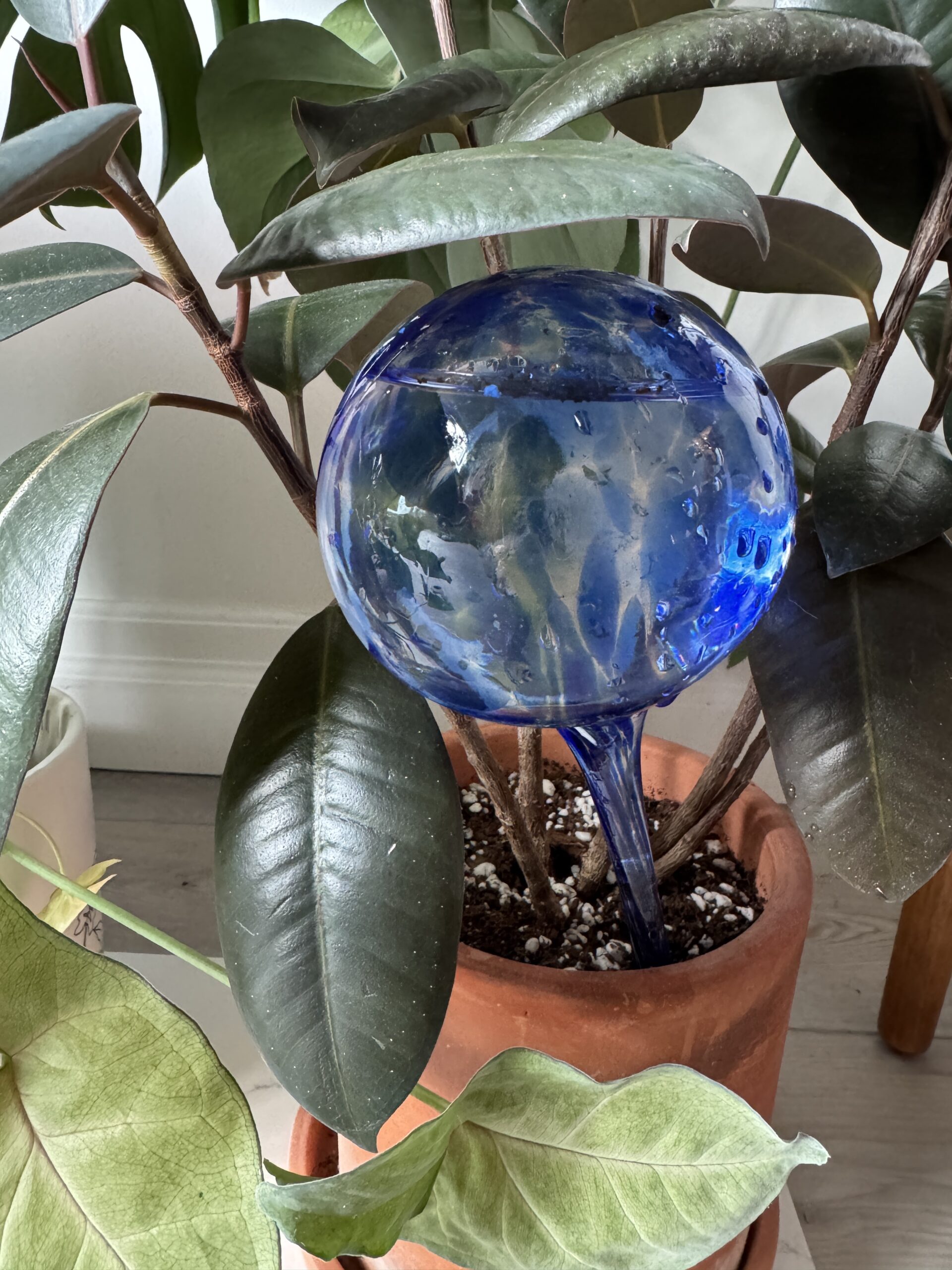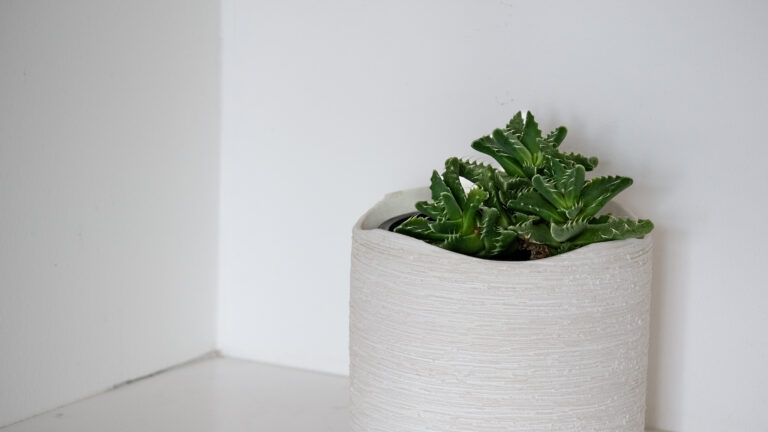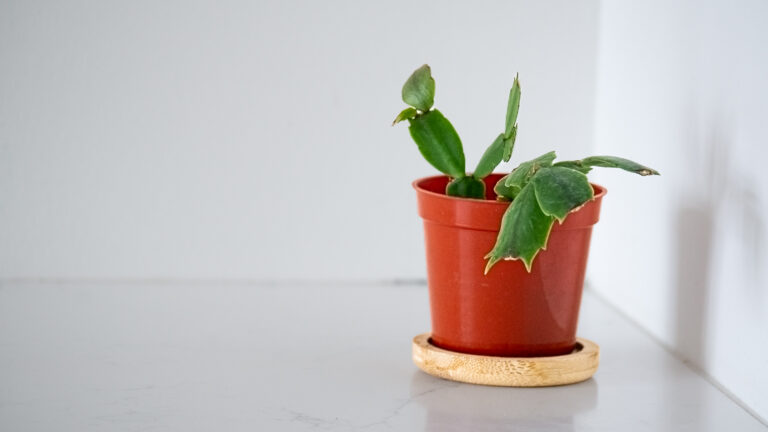Rebutia Heliosa or Aylostera heliosa (formerly Rebutia heliosa) is a member of the cactaceae family. It is native to Bolivia.
Aylostera heliosa (formerly Rebutia heliosa) is referred to as Heliosa because it means to “have a mass of suns”, referring to the appearance of the Aylostera heliosa’s flowers.
There are around 27 accepted species of the Aylostera family.
Rebutia Heliosa Appearance & Growth Habit
Rebutia Heliosa is a cylindrical cactus with silvery-white spines. There is one central cactus, with other smaller Heliosas that grow out of it.
When the Heliosa flowers, the flowers emerge from low on the stems, and are orange-red.
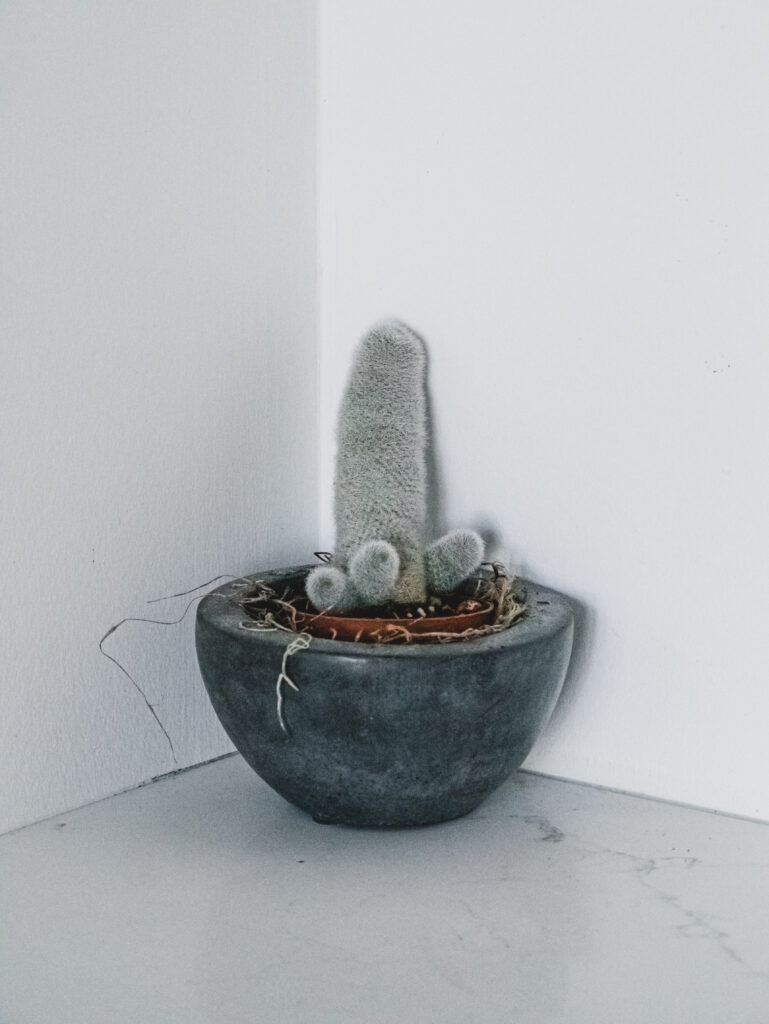
Light Requirements for Rebutia Heliosa
Rebutia Heliosa thrives in both bright-direct, and bright-indirect light. I keep my Heliosa in a north-east facing window and it is happy there.
Ideal Temperature & Humidity for Rebutia Heliosa
Rebutia Heliosa prefers a temperature between 5-35 degrees celsius.
They also prefer lower humidity since they come from mountainous regions, but will be fine in average household humidity levels (40%-60%). I use the Levoit Hybrid Ultrasonic Humidifier (LV600HH) to set the humidity in my apartment..
Since I live in Canada and the winters can be very dry, and the humidity can drop below 30% humidity, so its helpful to set the humidity at about 45% or 50% in this season to keep all of my plants thriving.
Growth Rate and Size of Rebutia Heliosa
On average, Rebutia Heliosa can grow up to 4 cm. New foliage grows from the side of the main barrel of the cactus. They appear as smaller balls with silvery spines.
To encourage healthy growth, fertilize once a month in the spring and summer.
How to Repot Rebutia Heliosa
Watch the video below to learn how to safely repot your Heliosa!
- Put on a pair of protective gloves to ensure you don’t end up with cactus needles in your hands
- Grab a pair of tongs and gently remove the Heliosa from its pot
- Add a well draining soil mix (plenty of perlite) to the new pot
- Grab the Heliosa with tongs again and put the cactus in its new pot
- Add more soil until the Heliosa is secure
- Water your Heliosa and put it in a well lit spot
For everything you will need for repotting your Heliosa, check-out my guide on 15 essentials for successfully repotting plants.
Blooming Habits of Rebutia Heliosa
The Rebutia Heliosa does bloom. It has orange-red flowers that typically bloom in the spring. Each bloom can last up to 10 days.
To encourage flowering, provide bright light with some direct morning sun, and allow a cool, dry winter rest period. Slightly pot-bound, well-established plants that aren’t overwatered tend to bloom most reliably.
After blooming, remove spent flowers to keep the plant tidy and enjoy its colorful display year after year.
Propagating Rebutia Heliosa: Offsets & Cuttings
The easiest way to start a new Heliosa is by cutting offsets as this cactus grows offshoots along the base of the mother plant.
Put on protective gloves, and grab tongs to hold the mother plant in one hand, while using shears or other sharp tools to remove the offshoot from the plant.
Set the cutting aside for a couple of days until a callus forms. Once calloused, pot the offshoots into well-draining soil. If you like rooting hormone, you can dip the cutting into rooting hormone before putting it into the soil. Regardless you will want to bury the cut end slightly. Water the soil lightly and place in a bright location with indirect light.
Eventually, roots will form and you will have a stable plant!
Remember, patience is key with propagation. Give your new Heliosa time to settle into its environment. Once you see new growth, you know your Heliosa is well established.
Watering Rebutia Heliosa: How and When
The Rebutia Heliosa likes to dry out between waterings. This will likely take once a month, but it could take longer in winter months.
To determine if your plant needs water, you can stick your finger in the soil (1 to 2 inches) and if it is dry, its ready for water! If you don’t want to get your hands dirty, you can try a moisture meter.
I typically bottom water my plants through the drainage hole of the pot on a base tray. It’s the easiest way to know if your Heliosa is thirsty or not. Overwatering can lead to fungus gnats, root rot, or the death of your plant.
You can top water, but it’s best to do so in a pot with drainage, until water is flowing out of the drainage hole. If your pot doesn’t have drainage, you might accidentally overwater your plant.
However, you should top water from time to time to make sure any built up minerals can wash through the plant. The water should drip out of the bottom of your drainage hole.
Common Pests and Problems in Rebutia Heliosa
Rebutia Heliosa can face the following pests and problems.
Heliosa Pests
- Mealy Bugs: These look like little white cotton balls on the Heliosa. Use a cotton swab with a drop of Isopropyl alcohol and try to scrape them off the plant or pick them off with tweezers. You can find these at the base of the plant.
- Spider Mites: If spider mites have taken to your Heliosa, spray them with a mixture of neem oil, dish soap and water (or you can buy an insecticidal soap). I repeat this about once or twice a week (depending on the severity of infestation) for about a month. It’s also good to do this preventatively once a month or so. You will know you have spider mites if you see webbing and epidermis damage on the Rebutia.
- Thrips: These are little, dark bugs that look like dirt. They suck the life out of the Rebutia Heliosa’s epidermis, and lay eggs within the tissue of the plant. As thrips age, they can grow wings and infect other plants. I spray infected plants with a mixture of neem oil, dish soap and water (you can also buy an insecticidal soap instead of making your own). Learn more at complete guide on how to get rid of thrips.
- Fungus gnats: Spray the Rebutia with a mixture of neem oil, dish soap and water (or insecticidal soap). Let the soil dry out and add dryer sheets on top of the soil so the gnats can’t sense the moisture on the soil.
Other Common Problems of Rebutia Heliosa
- Overwatering: Root rot happens from overwatering your Rebutia with insufficient drainage. You can improve the drainage of your plant by ensuring your Rebutia is potted in a planter with a drainage hole and using a well draining soil (something with a decent amount of perlite). You can also end up with fungus gnats or fungal disease from overwatering.
- Underwatering: Even though plants prefer to be underwatered over overwatered, you still have to remember to water your Rebutia on a consistent schedule. Signs of underwatering an include leaves becoming shrivelled, discoloured or dry.
Rebutia Heliosa Toxicity
Heliosa are typically not toxic to humans or pets. Even though the Heliosa is non-toxic, it is prickly, so you will want to keep it out of reach of young children.
Rebutia Heliosa Quick Care Guide
| Scientific Name | Aylostera heliosa (formerly Rebutia heliosa) |
| Nickname | Rebutia Heliosa, Crown Cacti |
| Origins | Bolivia |
| Light | Bright, indirect & direct light tolerant |
| Temperature | 5-35 degrees celsius (preferred) |
| Humidity | Low |
| Height | Up to 4 cm |
| Blooms | Yes |
| Propagate | Cutting Offsets |
| Water Frequency | When almost dry (likely once a month) |
| Pests | Mealy Bugs, Spider Mites, Thrips |
| Common Problems | Overwatering (root rot), underwatering, fungal disease, sunburn, cold temperatures |
| Toxicity | Non-toxic |
References
Below is a list of external sources I consulted while writing this post. This post is a mixture of my own experiences, and the external sources listed below:
World of Succulents – Rebutia Heliosa & Rebutia
Consulta Plantas – Rebutia Heliosa
Master Gardener WISC – Rebutias
Gardeners World – Rebutia Heliosa

